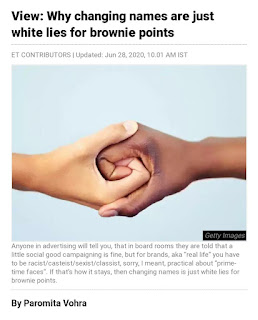
No, you’re not racist – Sabiha Mazid
You don’t like the colour of my skin
I was born with a name
Yet you called me ‘kali’:
Darkness personified
It didn’t stop at name-calling, of course
With ‘harmless’ jokes, you laughed
I cried.
My colourYour judgement
You told me to avoid white
Red and purple and orange
And all shades bright
I bowed, I agreed…I thought, maybe you were right
With a ‘concerned’ pat, yet again
You laughed.
I cried.
My colour
Your decisions
Spotlights were never for me
I didn’t find myself in fairy tales
Mirrors never told me I’m pretty
Songs never sung glories of my beauty
I didn’t ask
I never complained
With blatant shamelessness, indifference
Over and over again
You laughed
I cried.
My colour
Your rejection
And now I am tired
Of years and years of endless dirt
Of crying in remorse
Of despising my existence
Or letting myself feel so hurt
Yes I am dark
Darker
Than the darkest night you’ll ever see
For I have swallowed
Your ignorance and pride
Indifference, hatred
Judgements and decisions
And rejections alike
I’ve fought my own battles
I’ve cried a million tears
You have smothered me in pity
And suffocated me in fears
But there’s one thing you can’t break, my dear
My dear, ‘fair and lovely’ society!
I don’t need your approval
I don’t need your labels of beauty!
For shameless I am, in my proud ‘ugliness’
I am what I am
With a heart that feels love and empathy.
[No, you’re not racist
You just don’t like the colour of my skin
But you and me, we are all created equal
And rejecting your ideal standards…your subtle racism
That is where the revolution shall begin!]
Sabiha Mazid is a PhD Research Scholar at the Centre for the Study of Social Systems (CSSS), Jawaharlal Nehru University (JNU).
What Sells?



As Hindustan Unilever decided to drop ‘Fair’ from its best-selling fairness cream ‘Fair and Lovely’, it has been hailed as a bold and progressive step. But as sociologists we need to problematise the role of advertisements and the communication industry. The communication and marketing industry actively engages with ideas of feminism and reponds to it in targeting sections who they feel are ‘feminist’ and ‘anti racist’.
What happens is that in the increasing glossy features and advertisements, collective ideas of women’s liberation and freedom become reconfigured as essentially individual desires and goals, which the new opportunities that the growing market offered could gratify. Instances of backlash to feminism exist, but this is by no means a visible presence in the media (Chaudhuri 2000). Feminism and gender, albeit redefined, enters the lexicon of public discourse and is deployed widely by the state, civil society and the market. In the media it becomes a preferred choice to anchor its stories and images, to represent both itself and the “global nation” (Chaudhuri 2017).
This constitutive influence has been largely made possible through knowledge produced by a new set of firms specialized in market research and communication which are interested in understanding the Indian market. marketing agencies take cognizance of the impact of feminist ideas of “freedom” and “autonomy” on the new Indian woman consumer and further reconstruct these ideas in alignment with neo-liberal ideas of self-realization through achievement and pleasure (Chaudhuri 2017).
New and old ideas of gender are researched and deliberated upon, before they are deployed by the wide network of communication and market research agencies that form part of post-liberalized India’s popular culture. Gender became very visible, but perhaps in ways not anticipated by the women’s movement of the 1970s when it raised the question of physical invisibility of women in the public sphere and cognitive invisibility in extant conceptual frames: What strikes one most about these marketing and communication agencies is the refreshing straightforwardness and candor with which they explain the reason for using gender so extensively in marketing (Chaudhuri 2017).
This is a milieu wherein individuality, gender, sexuality, empowerment, cultural diversity and race are configured as elements in the business of consumption in a global market (Chaudhuri 2017). For more on this read:

| Chaudhuri, M. (2017). Refashioning India: Gender, Media, and a Transformed Public Discourse. New Delhi: Orient Blackswan. |
Chaudhuri, M. (2000). Feminism’ in Print Media. Indian journal of Gender Studies. 7(2): 263-288. (https://doi.org/10.1177/097152150000700208)

‘Anyone in advertising will tell you, that in board rooms they are told that a little social good campaigning is fine, but for brands, aka “real life” you have to be racist/casteist/sexist/classist, sorry, I meant, practical about “prime-time faces”. If that’s how it stays, then changing names is just white lies for brownie points.’
[Compilation by the Doing Sociology Team]
